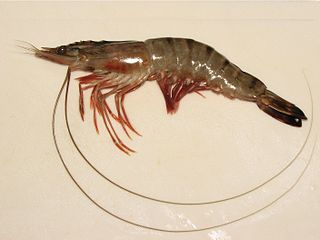
Penaeidae is a family of marine crustaceans in the suborder Dendrobranchiata, which are often referred to as penaeid shrimp or penaeid prawns. The Penaeidae contain many species of economic importance, such as the tiger prawn, whiteleg shrimp, Atlantic white shrimp, and Indian prawn. Many prawns are the subject of commercial fishery, and farming, both in marine settings, and in freshwater farms. Lateral line–like sense organs on the antennae have been reported in some species of Penaeidae. At 210 metres per second (760 km/h), the myelinated giant interneurons of pelagic penaeid shrimp have the world record for impulse conduction speed in any animal.
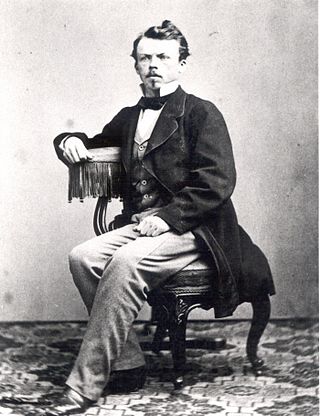
Carl Albert Oppel was a German paleontologist.

The Solnhofen Limestone or Solnhofen Plattenkalk is a collective term for multiple Late Jurassic lithographic limestones in southeastern Germany, which is famous for its well preserved fossil flora and fauna dating to the late Jurassic (Kimmeridgian-Tithonian). The paleoenvironment is also often referred to as the Solnhofen Archipelago. The Solnhofen Archipelago was located at the northern edge of the Tethys Ocean as part of a shallow epicontinental sea and is firmly a part of the Mediterranean realm.

Acanthochirana is an extinct genus of prawn that existed during the upper Jurassic period. It was named by E. Strand in 1928, and its type species is Acanthochirana cordata. They are distinguished from the related genus Aeger by the presence of teeth on the rostrum, which are absent in Aeger.

Albertoppelia is an extinct genus of prawn which existed during the Late Jurassic period, named after Albert Oppel. It contains the single species Abertoppelia kuempeli. Fossils of Albertoppelia were recovered from the Eichstätt Formation in Bavaria, Germany.
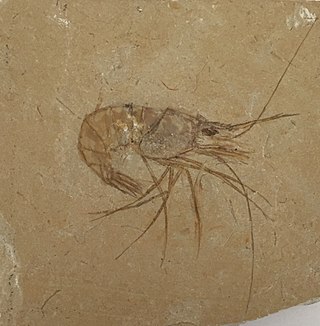
Carpopenaeus is an extinct genus of prawn, which existed during the Upper Jurassic and Cretaceous periods. It contains three species.
Pseudodusa is an extinct genus of prawn, containing only the species Pseudodusa frattigianii, known from the Solnhofen limestones of southern Germany.
Buergerocaris is an extinct genus of shrimp, containing only one species, Buergerocaris psittacoides.
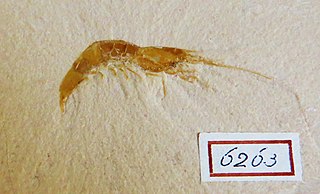
Hefriga is an extinct genus of shrimp in the order Decapoda. It contains three species, and lived in the Jurassic period.

Cancrinos is a genus of fossil crustaceans closely allied with the slipper lobsters. One species is known, C. claviger from the Jurassic of southern Germany.

Coleia is an extinct genus of decapods in the group Polychelida that lived from the Late Triassic to the Late Jurassic. It was described by Broderip in 1835, and the type species is C. antiqua. A new species, C. martinlutheri, which existed during the Sinemurian of what is now Germany, was described by Günter Schweigert and Werner Ernst in 2012.
This list of fossil arthropods described in 2013 is a list of new taxa of trilobites, fossil insects, crustaceans, arachnids and other fossil arthropods of every kind that have been described during the year 2013. The list only includes taxa at the level of genus or species.
This list of fossil arthropods described in 2014 is a list of new taxa of trilobites, fossil insects, crustaceans, arachnids and other fossil arthropods of every kind that have been described during the year 2014. The list only includes taxa at the level of genus or species.
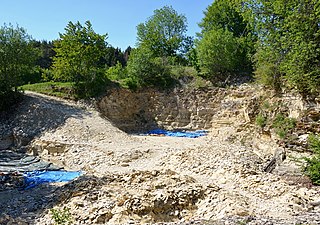
The Nusplingen Limestone is a geological formation in Baden-Württemberg, Germany. It preserves fossils dating to the Kimmeridgian age of the Late Jurassic. It mainly consists of lithographic limestones deposited in a marine basin, similar to the Solnhofen Limestone. Fossils of pterosaurs, thalattosuchians, and the oldest geophilomorph centipede Eogeophilus were found in the Nusplingen Limestone.
This list of fossil arthropods described in 2017 is a list of new taxa of trilobites, fossil insects, crustaceans, arachnids and other fossil arthropods of every kind that are scheduled to be described during the year 2017, as well as other significant discoveries and events related to arthropod paleontology that are scheduled to occur in the year 2017.

Muensterella is a fossil stem-octopod known from a handful of specimens from the Late Jurassic lithographic limestones of southern Germany and the upper Cretaceous of Germany and Texas. Another indeterminate specimen of the Genus is known from the Tithonian Nordenskjöld Formation of Antarctica.
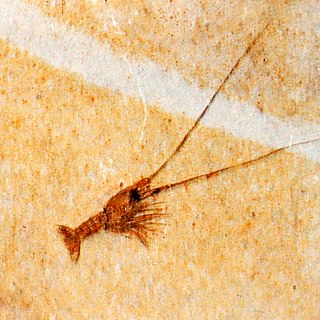
Palinurina is an extinct genus of crustaceans, belonging to the decapods. These animals lived between the Lower Jurassic and the Upper Jurassic and their fossils can be found in Europe. This crustacean is considered one of the oldest lobsters.
Cephalodiscus nusplingensis is an extinct hemichordate species from the Upper Jurassic of southwestern Germany.

Pseudastacus is an extinct genus of decapod crustaceans that lived during the Jurassic period in Europe, and possibly the Cretaceous period in Lebanon. Many species have been assigned to it, though the placement of some species remains uncertain and others have been reassigned to different genera. Fossils attributable to this genus were first described by Georg zu Münster in 1839 under the name Bolina pustulosa, but the generic name was changed in 1861 after Albert Oppel noted that it was preoccupied. The genus has been placed into different families by numerous authors, historically being assigned to Nephropidae or Protastacidae. Currently, it is believed to be a member of Stenochiridae.

Stenochirus is an extinct genus of decapod crustaceans that lived from the Callovian to Tithonian stages of the Jurassic period. Its fossils have been found in Germany and France.














